TALES OF MY FATHER
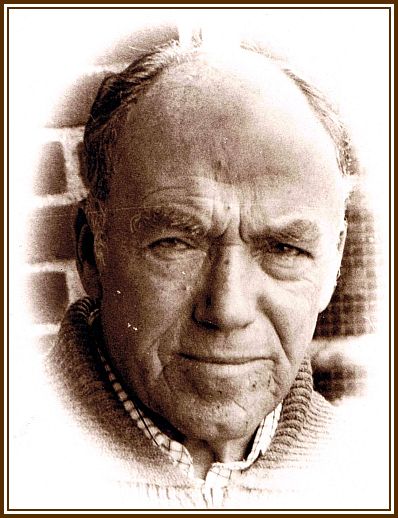
My Father, Charles Henry Jenkins (1908-1989)
Jack-of-all-Trades, Master-of-None ……. an enigma
-oOo-
TALE SIX:
THE WAR YEARS AND
THE LIBERATION OF BERGEN-BELSEN
-oOo-
THIS TALE IS DEDICATED TO THOSE PEOPLE WHO SUFFERED THROUGH THE SECOND WORLD WAR AND THOSE WHO LOST THEIR LIVES AT THE HANDS OF THE REGIME.
IT IS OUR DUTY TO ENSURE THAT SUCH EVENTS STOP HAPPENING.
-oOo-
IF THE FOLLOWING ACCOUNT UPSETS, ANGERS
OR DISTURBS ANY READER,
PLEASE ACCEPT MY REGRETS AND APOLOGIES.
PLEASE BE AWARE THAT WHAT FOLLOWS IS
THE BRIEFEST OF ACCOUNTS ON THE RISE OF THE NAZIS
AND DOES NOT PRETEND IN ANYWAY
TO BE A FULL AND COMPREHENSIVE HISTORY.
I AM SURE THAT THERE WILL BE MANY READERS
WHO WILL TAKE UMBRIDGE AT WHAT I HAVE WRITTEN.
THIS IS NOT MY INTENTION.
THE PURPOSE OF THE ACCOUNT
IS SIMPLY TO GIVE A BRIEF BACKGROUND LEADING TO WHAT
MY FATHER, LIKE MANY OTHERS OF THE TIME, SUFFERED
WHEN THEY CAME TO BERGEN-BELSEN AND OTHER SUCH CAMPS.
-oOo-
PAGE TWO:
THE RISE OF THE DEUTSCHES REICH
Following the First World War, from 1919 until 1933, the German State was unofficially known as the Wiemar Republic. The Republic faced a number of devastating problems during these years including Hyperinflation, political left- and right-wing extremism and contentious relationships with former combatants. The German populace blamed The Republic and not the military leaders for the loss of the war or for the terms inflicted on them following their loss.
The first President of The Republic (1919 until 1925) was Friedrich Ebert (1871-1925), and upon his death, the position passed to Paul Ludwig Hans Anton von Beneckendorff und von Hindenburg (1847-1934) who held it until 1933. As a result of the dire straits that the country was now in, President Hindenburg was compelled to appoint Adolf Hitler as Chancellor and allow members of The Nazi Party to become part of a coalition government.
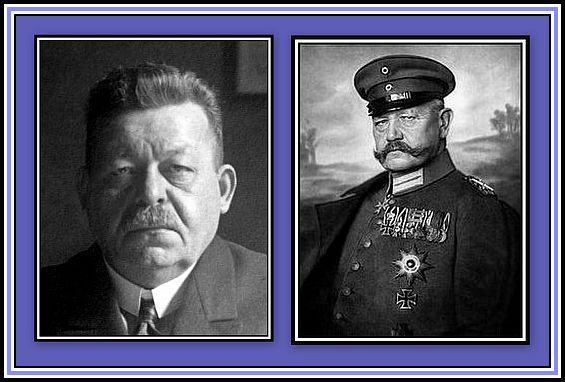 Presidents of The Wiemar Republic
Presidents of The Wiemar Republic
Left: Friedrich Ebert
Right: Paul von Hindenburg who remarked that the French temperament was too vicarious and therefore too capricious for his taste!
The situation worsened, and in 1933, The Republic collapsed and Herr Hitler seized power. With this, any semblance of democracy faded completely and the country became a one-party State and entered the Nazi Era.
-oOo-
Between 1933 and 1945, Germany was officially known as Deutsches Reich and Großdeutsches Reich (i.e. the Greater German Reich). However, it was unofficially known as Nazi Germany, The Third Reich (i.e. Kingdom) and the National Socialist Period.
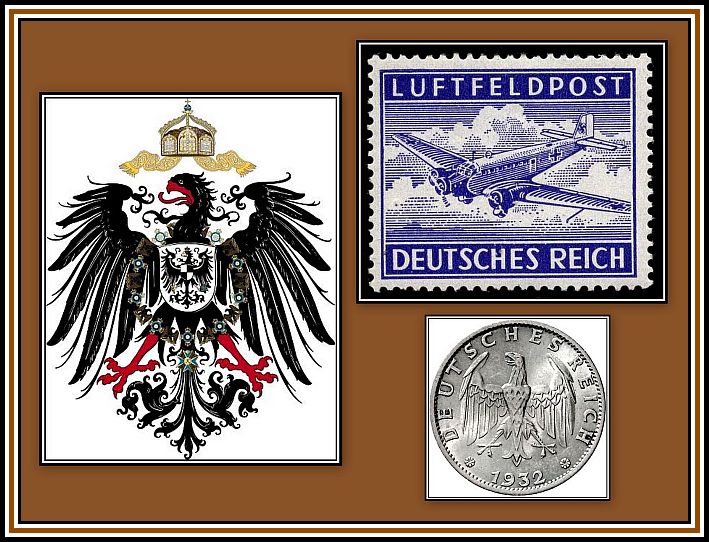
-oOo-
The name of The Third Reich comes from the fact that TheNazis saw their time as being the third glorious age of Germany:
- The First Reich being The Holy Roman Empire (800-1806) of Charlemagne (742?-814) and
- The Second that of the Hohenzollern Dynasty (1415-1898) of Otto von Bismarck (1815-1898)
-oOo-
Nazism came from the beliefs of a number of paramilitary groups that emerged during the Weimar Republic (1919-1933) after German defeat in the First World War and the signing of The Treaty of Versailles in 1919. TheNazis believed that The Third Reich began the thousand-year reign of Jesus Christ here on earth. The term has Christian connotations with the government steeped in religious imagery and symbolism.
Nazism is a form of Fascism that combines Scientific Racism and Anti-Semitism. Its application led to the belief that Germans were part of an Aryan or Nordic Master Race and aimed at bringing all Germans together to create a Homogeneous Society and to expand into other lands under the doctrine, Lebensraum (English: living space), which refers to policies and Settler Colonisation where those deemed inferior were either considered as community aliens or belonging to an inferior race.
The rise of Nazism in Germany was also fueled by the wish for revenge for the country’s territorial losses and the perceived humiliation and loss of national pride brought about by TheTreaty of Versailles following the end of the First World War and also to Anti-Communist feelings that were directed at the U.S.S.R. Nazism also felt that Jews controlled the world’s purse strings and were responsible for much of their country’s woes.
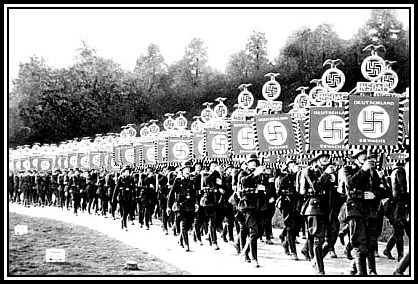
-oOo-
During the years of The Third Reich, Germany was a dictatorship under the control of The Nazi Party (German: Nationalsozialismus; English: National Socialism) and led by Adolf Hitler (1889-1945). Herr Hitler had been appointed as Chancellor of Germany by the Presidentof the Weimar Republic, Paul von Hindenburg (1847-1934) in 1933.
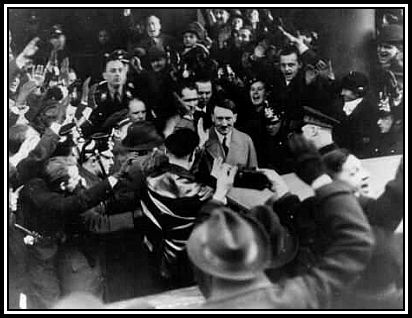 Herr Hitler having been sworn in as Chancellor with well-wishers
Herr Hitler having been sworn in as Chancellor with well-wishers
Photograph by Wide World Photo & appearing in the Holocaust Encyclopedia
Following the death of President von Hindenburg in 1934, Herr Hitler declared himself both Chancellor and President, which was later confirmed on him by a national referendum held in August 1934. With this, Herr Hitler became the one leader of the country, The Führer, and as a result, his word became law above all earlier laws.
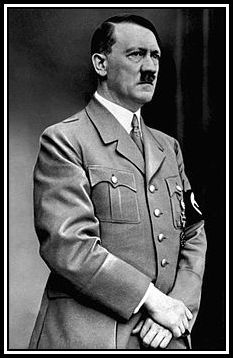
Click below to watch a video on The Rise of The Third Reich
-oOo-
The Nazi Party promised the German population:
- a strong government,
- an end to civil unrest,
- radical changes to economic policy,
- cultural renewal based on traditionalism,
- to bring back national pride and military rearmament in opposition to the Treaty of Versailles of 1919 and
- the creation of liberal democracy.
-oOo-
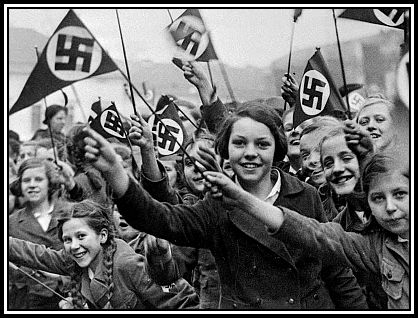
Herr Hitler and his cohorts believed the German people to be the Master Race and suffered no opposition including that of church leaders. As a result, The Third Reich proved to be a brutal regimen and either murdered, imprisoned or exiled anyone that dared to oppose them, including liberals, socialists and communists at will. A number of specific groups especially hated and thought of as being inferior (i.e.Untermenschen) by The Nazis were singled out and robbed of position, possessions and liberty. Amongst such groups were Jews, Romani (Gypsies) and Homosexuals.
The populace was subjected to education based on the principles of Nazism and used film, mass rallies and Herr Hitler’s oratory to achieve their aims. In addition, artistic expression was subject to Government control. In this way, the regimen was able to control and mold popular opinion.
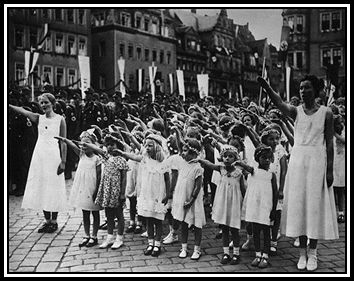 Young Nazis
Young Nazis
Mothers were encouraged to have as many children as possible in order to increase the population. Between 1939 and 1945, German women who gave birth to at least four children were awarded The Cross of Honour of the German Mother (German: Ehrenkreuz der Deutschen Mutter). The award was granted in recognition of the substantial importance of a woman’s role in motherhood and in support of a strong Germany. The award was later extended to women of the Volksdeutsche (ethnic German) from annexed Austria and The Sudentenland (see below).
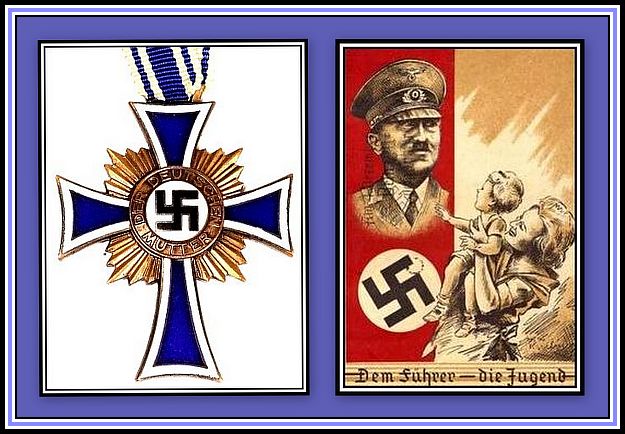
-oOo-
The Third Reich also put great store upon fitness for military service and its achievements were to be demonstrated to the world at the Olympic Games of 1936 (Games of the XI Olympiad) although not everything went Herr Hitler’s way since Jesse Owens (1913-1980) won four gold medals and angered The Führer.
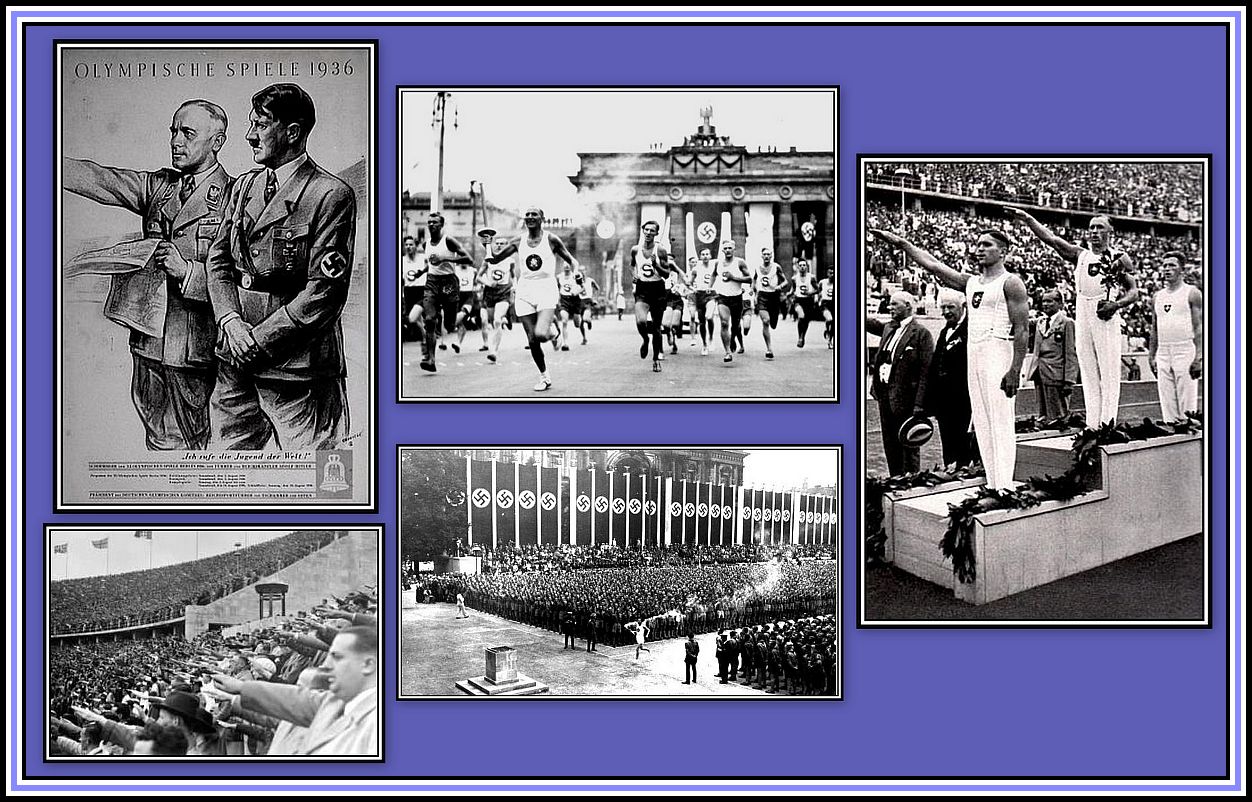 The Olympic Games of 1936
The Olympic Games of 1936
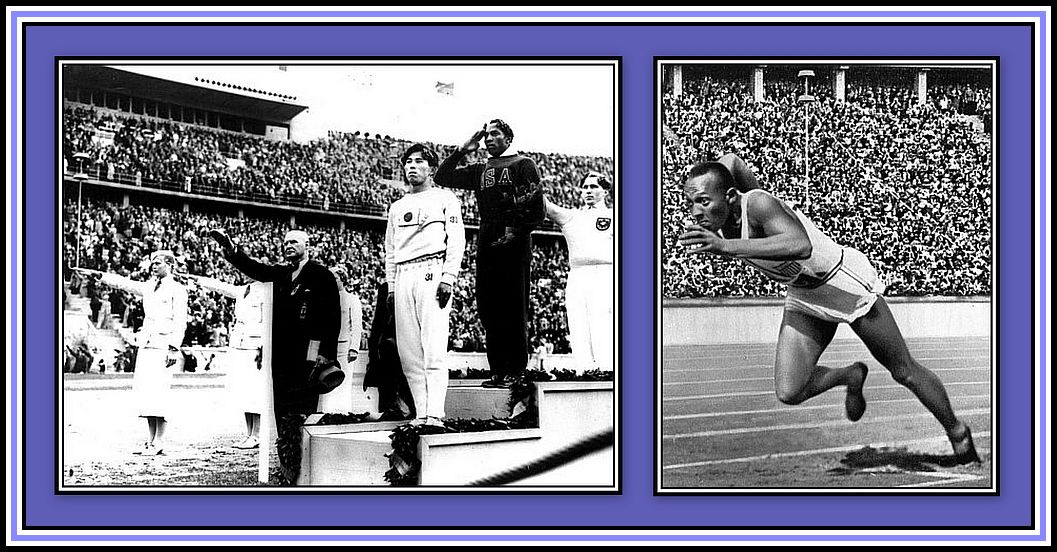 Jesse Owens at The Games
Jesse Owens at The Games
-oOo-
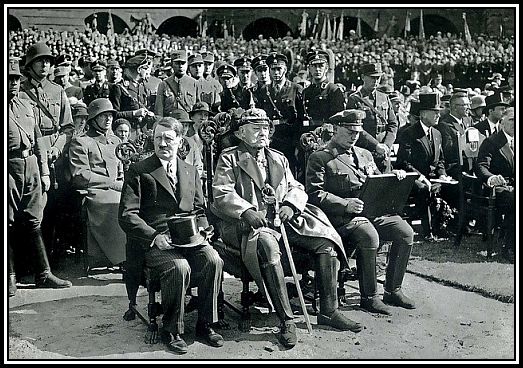 Herr Hitler dressed in a morning suit (Right) with other Right Wing Leaders
Herr Hitler dressed in a morning suit (Right) with other Right Wing Leaders
When Herr Hitler came to power, the world was gripped by recession. The economy was in turmoil at the end of the First World War and was required to make Reparations Payments under the Treaty of Versailles. The Nazis achieved economic stability with an end to mass unemployment and galloping inflation by a combination of military spending and a mixed economy together. During this time, the Bundesautobahn (English: Federal Motorways) and many grand public buildings were constructed. These achievements greatly increased the popularity of the party with the public.
-oOo-
The Nazis began aggressive territorial demands in the late 1930 in order to bring under their control areas they believed should be part of Germany. In order to gain world acceptance of their demands, the regime threatened war if they were not met. This marked a time of appeasement by many European leaders.
Nazi Germany began its territorial expansion in March 1938 with the Annexation of Austria (i.e. Anschluss; English: connection or joining). The roots of the Anschuluss grew from the formation of the Unification of Germany in 1871 when Austrian Germans were excluded from the newly formed state. At the end of the First World War, Austrian Germans hoped to join with Germany, but various treaties did not sanction it. As a result, The Nazis felt justified in annexing Austria.
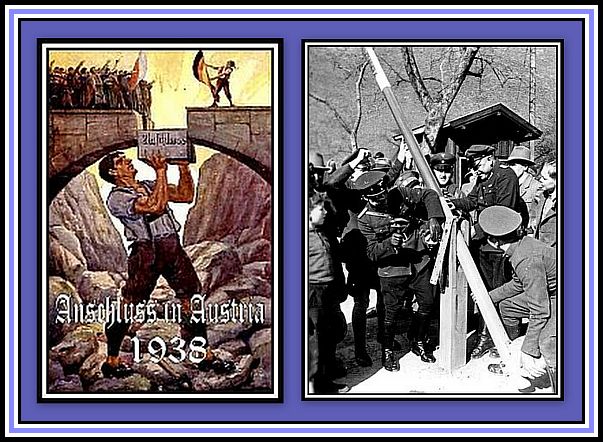 Anschluss, 1938; (Right) Removing the barrier between Austria and Germany
Anschluss, 1938; (Right) Removing the barrier between Austria and Germany
The Nazis next turned their attention to the northern and western border regions of Czechoslovakia, which were formerly part of German Austria and known collectively as The Sudentenland and inhabited by German speaking people. The Nazis insisted that this area should now become part of Germany. After much debate, The Munich Agreement was signed by Britain, France, Italy and Germany on 30th September, 1938, and permitted Annexation of this area.
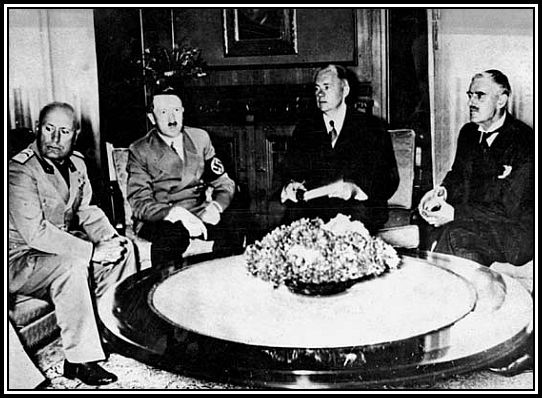 The Meeting at Berchtesgaden
The Meeting at Berchtesgaden
Here Benito Mussolini (1883-1945; Il Duce, English: The Leader), Herr Hitler & British Prime Minister, Neville Chamberlain (1869-1940) signed The Munich Agreement. French premier, Edouard Daladier (1884-1970), and foreign minister, Georges Bonnet (1889-1974), then went to London, where a joint proposal was prepared stipulating that all areas with a population greater than 50% Sudeten-German be returned to Germany.
The U.S.S.R. and Czechoslovakian authorities were not part of these negotiations. Czechoslovakia was bitterly against annexation since The Sudentenland was important to them since most of its border defenses were there along with its banks and heavy industry.
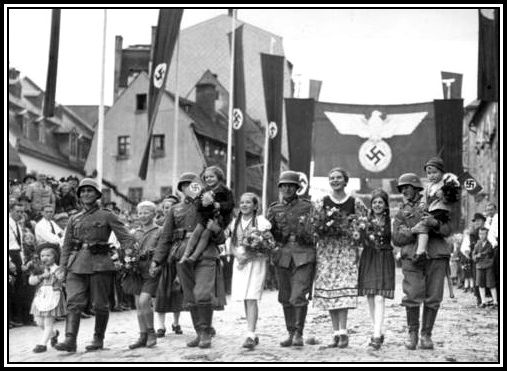 Celebration as The Sudentenland joins The Third Reich
Celebration as The Sudentenland joins The Third Reich
Following the signing of The Munich Agreement and his return to London, Mr. Chamberlain declared that he had brought home a document signed by Herr Hitler, which was a peace treaty between Britain and Nazi Germany and that would ensure Peace in Our Time.
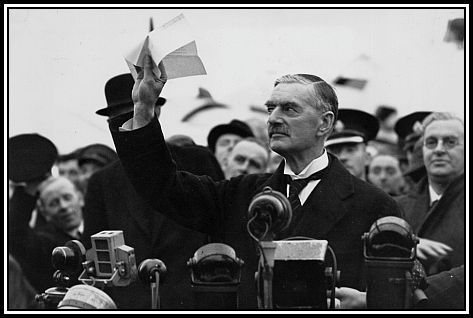 Mr. Chamberlain delivering the Peace in Our Time address upon his return to Britain
Mr. Chamberlain delivering the Peace in Our Time address upon his return to Britain
-oOo-
In August 1939, Herr Hitler entered into a non-aggression neutrality pact with the U.S.S.R, which was known as The Molotov-Ribbentrop, The Nazi-Soviet or The German-Soviet Non-Aggression Pact.
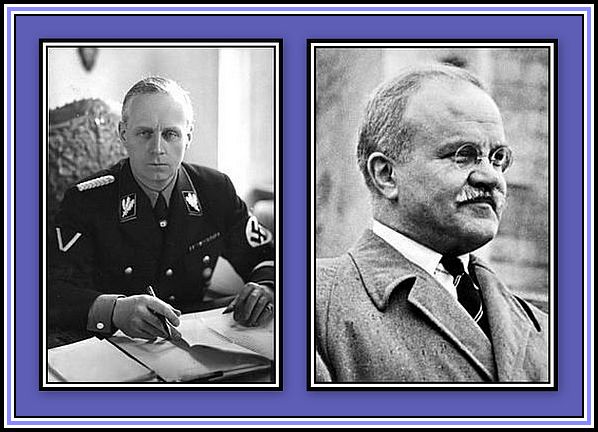 (Left) Joachim von Ribbentrop (1893-1946) & (Right) Vyacheslav Molotov (1890-1986)
(Left) Joachim von Ribbentrop (1893-1946) & (Right) Vyacheslav Molotov (1890-1986)
-oOo-
Prior to the signing of this pact, relations between Germany and the U.S.S.R. were poor. In 1936, Germany and Italy had supported the Nationalists in the Spanish Civil War while the U.S.S.R. had lent its support to the Second Spanish Republic (1931-1939), thereby making the conflict a proxy war between Germany and the U.S.S.R. and one where new weapons could be tried out.
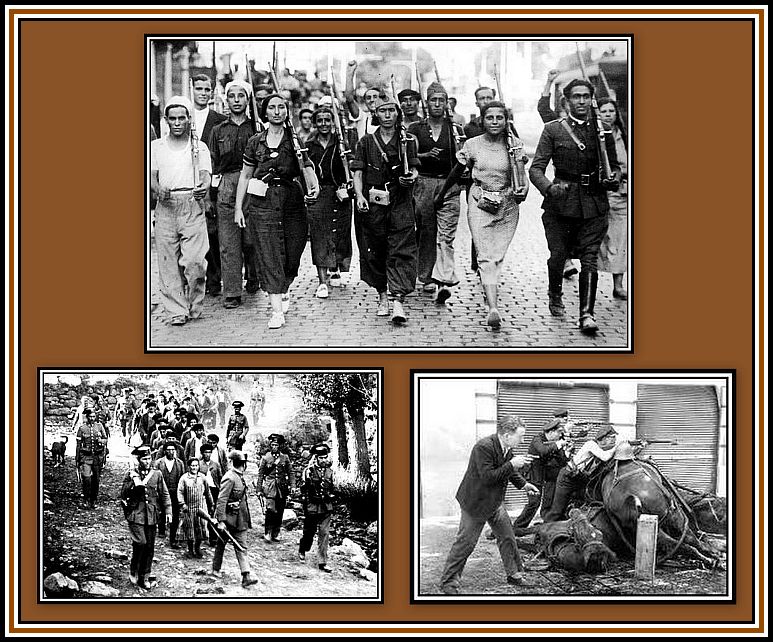
On the 26th April, 1937, the Nazi German Air Force, the Luftwaffe, bombed Guernica (Gernika), a Basque town in the province of Biscay. The attack on Guernica was one of the first aerial bombings by the Luftwaffe and resulted in the death of 1,654 civilians.
In January 1937, the Spanish Republican Government commissioned Pablo Picasso (1881-1973) to create a large mural to depict the horrors of the bombing of Guernica. The completed work was presented to the public at the Exposition Internationale des Arts et Techniques dans la Vie Moderne at the Paris World Fair of 1937.
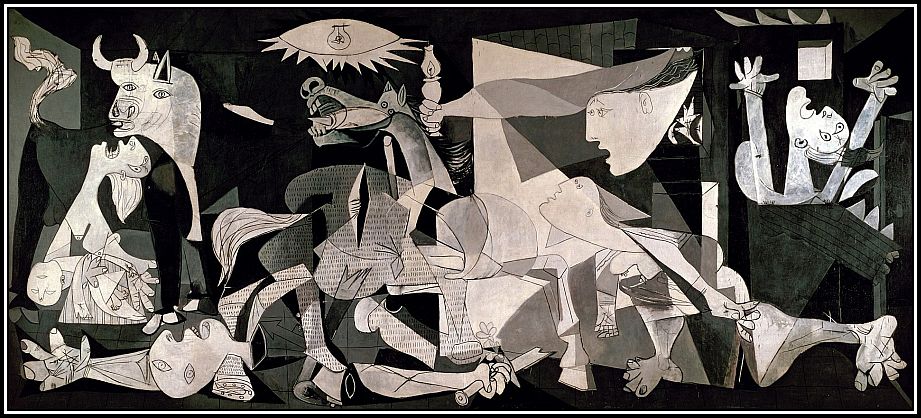 Guernica by Pablo Picasso
Guernica by Pablo Picasso
-oOo-
The Nazis had openly considered the Slavs of the U.S.S.R. together with those of other countries to be members of an inferior race, as they did of Jews who they associated with both Communism and Capitalism. In view of The Nazis strong feelings against the U.S.S.R., Britain and France did not invite them to the Munich Conference to decide the fate of Czechoslovakia. The Soviets for their part believed that Britain and France would stay neutral in any war between them and Germany.
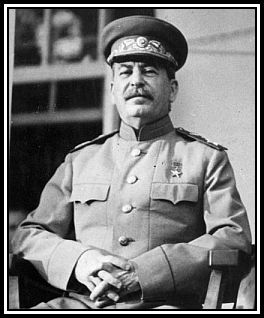 Joseph Stalin
Joseph Stalin
With the signing of The Munich Agreement, Joseph Stalin (1878-1953), leader of the U.S.S.R., felt that Britain and France had agreed to hand over Czechoslovakia to Germany and that they might have similar plans for the U.S.S.R. whereby they would divide the lands between themselves. This belief, and various mutual needs (raw materials, military equipment etc), led the U.S.S.R. to reconsider its attitude towards Nazi Germany, thereby allowing rapprochement, which eventually led to the signing of The Molotov-Ribbentrop Pact in 1939.
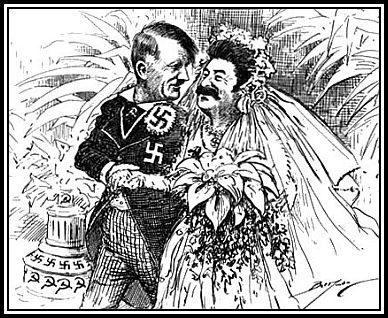 Cartoon of the time entitled, How long will the Honeymoon last?
Cartoon of the time entitled, How long will the Honeymoon last?
Apparently, as early as the summer of 1940, Herr Hitler had begun to secretly discuss the invasion of the U.S.S.R. The Pact came to an end in June 1941 when Germany launched an attack, known as Operation Barbarossa, on Soviet positions in Eastern Poland.
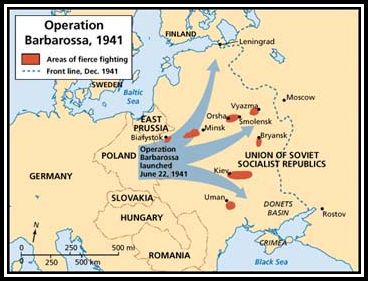 Reproduced from the United States History website
Reproduced from the United States History website
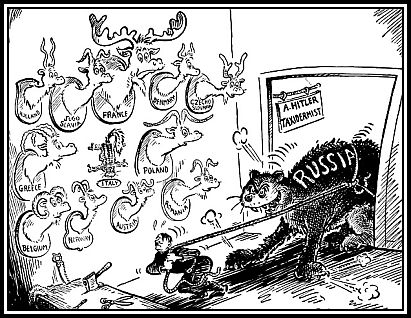
-oOo-
In March 1939, Nazi Germany defied The Munich Agreement and occupied Czechoslovakia. As a result, Britain and France guaranteed the independence of Poland, Belgium, Romania, Greece and Turkey. The agreement between Britain and Poland became a military alliance in April 1939.
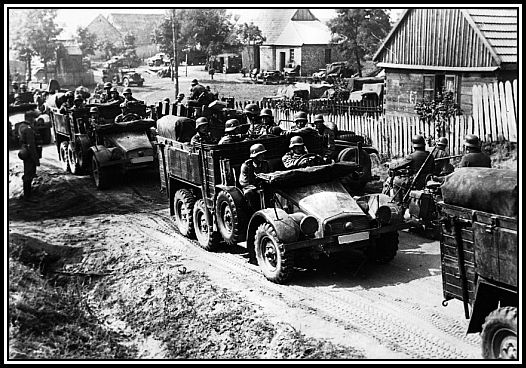 German invasion of Poland in 1939
German invasion of Poland in 1939
Germany invaded Poland on the 1st September, 1939. An ultimatum was sent immediately to the German authorities stating that unless the forces were not withdrawn immediately, a state of war would exist. As no reply was received, Britain and France declared war on Germany on the 3rd September. This marked the start of The Second World War. Australia, New Zealand and South Africa also declared war on Germany at this time and Canada acted similarly on the 10th September.
Both Britain and France believed that the war would be long and mobilised forces for defensive land operations against Germany. In addition, they imposed a trade blockage and began to increase re-armament.
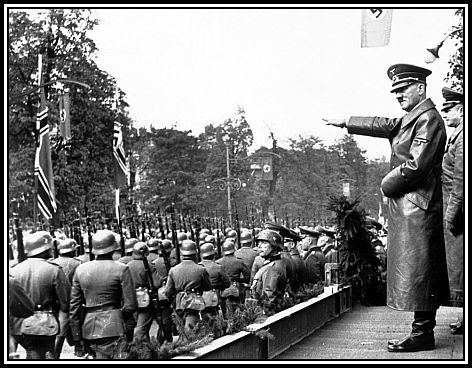 Herr Hitler in Warsaw in October 1939
Herr Hitler in Warsaw in October 1939
-oOo-
Although the British and French were now preparing for war, what was to follow would prove to be beyond anything imaginable.
Mars, The Bringer of War from The Planets Suite by Gustuv Holst (1874-1934) played by the BBC Symphony Orchestra with the Elysian Singers conducted by Maestra Susanna Mälkki and performed at the Royal Albert Hall, London as part of the Promenade Concerts of 2015
-oOo-
